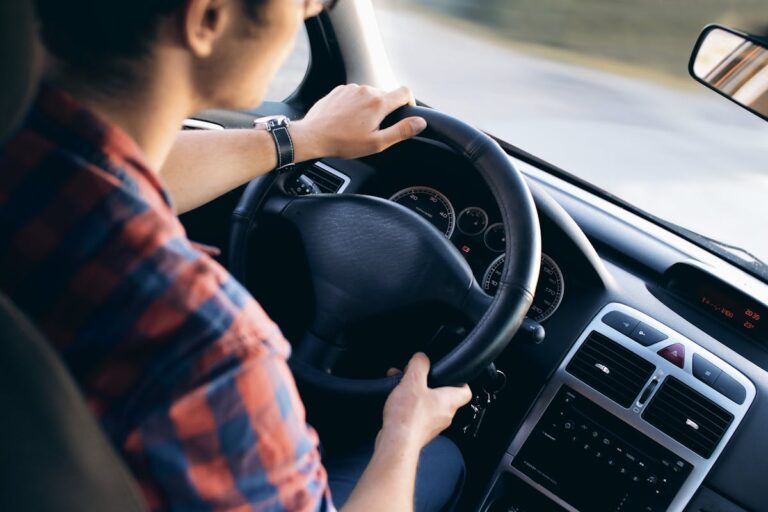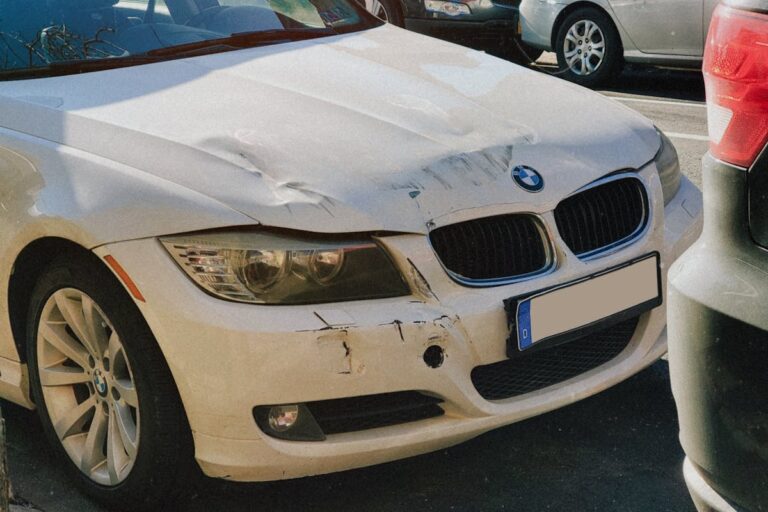How Evidence Shapes Car Accident Claims

The importance of evidence in car accident claims cannot be overstated, as it has a direct impact on the determination of liability and the ensuing compensation. From photographs of the incident to medical reports, eyewitness testimonies, and expert opinions, each piece of evidence carries weight and contributes to the overall narrative of the event. Yet, how should one collect and present evidence effectively? And, what role does it play in negotiations with insurance companies? There is indeed much to explore and discuss in this aspect of personal injury law.
Understanding Car Accident Claims
Maneuvering the complex maze of car accident claims requires a fair understanding of the process. Steering this path involves legal considerations and extensive knowledge of insurance policies. Understanding accident liability and the intricacies of claim processes is vital in securing a fair compensation.
Accident liability, a significant aspect, is determined by the fault in the accident. This fault determination is a considerable factor in compensation calculations. The party found to be more at fault often bears the burden of compensation, making this a pivotal point in claim processes.
Insurance policies, on the other hand, are not always straightforward. Understanding the terms and conditions, exclusions, and coverages can be a challenging task. Yet, it is essential to guarantee that the insurance companies do not undervalue your claim.
Effective negotiation tactics may aid in securing a better settlement offer. A persuasive argument, backed by a strong understanding of the claim process, can lead to an advantageous outcome. Additionally, understanding how compensation calculations work can help you assess whether the settlement offers are fair.
Importance of Evidence Gathering
Understanding the significance of evidence collection is essential in car accident claims. The types of evidence in accidents can be varied and numerous, and effective collection methods can greatly impact the outcome of the claim. A thorough analysis of these aspects will provide a robust framework for establishing fault and determining compensation.
Evidence Types in Accidents
The kaleidoscope of evidence types in car accidents plays a paramount role in substantiating a claim and ensuring a fair resolution. In the pursuit of justice, every piece of evidence can be the deciding factor, from surveillance footage and traffic reports to the detailed findings from vehicle inspections.
- Surveillance Footage & Traffic Reports: These can furnish irrefutable evidence of the accident, often capturing the event in real-time. GPS data can also play a significant role, providing precise details about the location and movement of the vehicles involved.
- Vehicle Inspections & Accident Diagrams: A thorough inspection can reveal essential details about the accident’s impact and possible causes. Accident diagrams, on the other hand, help visualize the sequence of events, often used in conjunction with police narratives and accident reconstructions.
- Personal Records & Eyewitness Accounts: Insurance policies can shed light on coverage and potential liabilities, while social media can provide unexpected, yet valuable, insights into circumstances surrounding the accident. Meanwhile, eyewitness accounts offer first-hand perspectives that can corroborate or challenge other pieces of evidence.
Understanding these evidence categories is critical to comprehending the complexity and multidimensional nature of car accident claims.
Effective Evidence Collection
Effective evidence collection in car accident claims is far from being a mere administrative formality; it is, in fact, a critical and strategic process that can make or break the case. The value of evidence preservation cannot be overemphasized. It is the foundation upon which a solid argument is built; it substantiates claims and counteracts disputes.
Moreover, effective evidence collection does not merely entail gathering information. It also involves organizing, safeguarding, and, when applicable, presenting it in a convincing manner. This is where digital documentation comes into play. As we live in an increasingly digital age, the importance of capturing, storing, and analyzing digital evidence is paramount.
In car accident claims, digital documentation may include, but is not limited to, dash cam footage, GPS data, mobile phone records, and surveillance videos. These forms of digital evidence can provide an objective account of events leading up to, during, and after the accident. Consequently, it is essential that they are preserved and presented in a way that effectively supports the claim.
Types of Car Accident Evidence
In the domain of car accident claims, the type of evidence presented plays a pivotal role in determining the outcome of a case. Two particularly significant types of evidence are photographic proof and witness statements. We will now examine the importance and value of these elements in establishing the facts and influencing the result of a car accident claim.
Photographic Proof Importance
Undeniably, the importance of photographic proof in car accident cases cannot be overstated. Photographic clarity and precise visual documentation can play a pivotal role in discerning the truth and establishing liability.
- Photographic Clarity: High-resolution images can capture minute details at the accident scene, providing an unbiased account of the accident. They can reveal key elements such as vehicle damage, road conditions, and even previously unnoticed contributing factors.
- Visual Documentation: Photos serve as a visual timeline, preserving the state of the accident scene before any changes occur. This visual evidence can corroborate or dispute the claims made by parties involved in the accident.
- Credibility Boost: Photos can lend credibility to a claimant’s narrative, especially when they align with other pieces of evidence. They provide tangible proof that can sway judgement in favor of the claimant.
Witness Statements Value
Just as photographic proof holds considerable importance in car accident claims, so too do witness statements. Their value is often underestimated, despite the vital role they play in substantiating the validity of a claim.
Eyewitness credibility is a fundamental factor that can decisively impact the outcome of a car accident case. A credible witness can provide a trustworthy narrative of the incident, lending substantial weight to the claimant’s account. This could be a passerby, a bystander, or even a passenger in the involved vehicles. Their unbiased perspective and firsthand account can help paint a clear picture of the event.
Another essential aspect to take into account is statement consistency. In the suspenseful aftermath of a car accident, details can become blurry or distorted. Nonetheless, a consistent statement from a witness adds a powerful layer of authenticity to a claim. When a witness’s account aligns seamlessly with other evidence, it strengthens the claimant’s position greatly.
Therefore, it is of paramount importance to collect witness statements promptly after a car accident. These statements, provided they exhibit credibility and consistency, can notably enhance the value of a claim, potentially tipping the scales in favor of the claimant.
Documenting the Accident Scene
While it may seem overwhelming in the aftermath of a car accident, it is vital to document the scene meticulously. This process, known as scene preservation, requires attention to detail and a systematic approach.
To accomplish scene preservation effectively, consider the following three steps:
- Sketch the Accident Scene: Accident sketches can provide a clear representation of the incident. Confirm to detail vehicle positioning, environmental factors such as road conditions, weather, and lighting, and any other relevant information.
- Law Enforcement and Insurance Protocols: Promptly notify law enforcement and your insurance company about the accident. Their involvement is essential in official documentation and establishing the facts surrounding the incident.
- Collect Eyewitness Information and Digital Evidence: Eyewitness reliability plays a significant role in accident claims. Gather their contact information and statements. Additionally, digital evidence, such as photos and videos, can provide irrefutable proof of the circumstances surrounding the accident.
Importance of Medical Records
One cannot overstate the significance of medical records in car accident claims. These documents serve as essential evidence in determining the severity, extent, and direct impact of the injuries sustained. Medical documentation provides a thorough and authoritative account of the injuries, consequently substantiating the claims made by the victim.
Medical records provide a detailed treatment history, outlining the progression of the injury and the necessary medical interventions undertaken. This chronological record helps establish a direct link between the accident and the injuries, countering any potential disputes regarding the cause of the injuries. Additionally, the cost of treatment and rehabilitation, which is also recorded, aids in determining the compensation amount.
Furthermore, the medical records offer an insight into the victim’s health before the accident, which can be instrumental in distinguishing pre-existing conditions from the injuries caused by the accident. This distinction is significant since compensation is typically awarded for injuries directly attributable to the accident.
Role of Witness Testimonies
Building on the importance of medical records, another important element in car accident claims is the role of witness testimonies. These testimonies can provide a differing perspective, often a neutral one, that can be vital in settling car accident disputes. Their role hinges on two pivotal factors: witness credibility and eyewitness reliability.
- Witness Credibility: The credibility of a witness can greatly impact the claim’s outcome. Factors such as the witness’s relationship to the involved parties, their criminal record, and their overall character may affect how their testimony is considered.
- Eyewitness Reliability: The reliability of an eyewitness’s account can also influence the claim. Variables such as the witness’s proximity to the accident and their ability to recall facts clearly can sway a judge or jury’s opinion.
- Consistency of Testimonies: Consistency between different witness testimonies can further strengthen a case, providing a more solid and believable version of events.
Witness testimonies, when credible and reliable, can greatly tip the scales in car accident claims. As a result, it is essential for claimants to understand the weight of these testimonies and utilize them effectively while presenting their case.
Using Expert Witnesses
In the domain of car accident claims, expert witnesses serve as powerful tools in the pursuit of truth and justice. They provide a level of expertise that normal witnesses cannot, offering detailed and accurate information that can greatly influence the case’s outcome.
The expert testimony given by these individuals is often grounded in forensic analysis of the accident scene. This may include accident reconstruction, which involves using scientific principles and information from the crash scene to recreate the incident’s events. This is essential for liability determination, as it can help establish who was at fault for the accident.
Expert witnesses also play a vital role in damage assessment. They can provide an unbiased and professional estimate of the damage inflicted on vehicles or property, which is key to calculating appropriate compensation.
Credibility evaluation is another important part of an expert witness’s role. Their expert opinions are assessed for credibility, which can strengthen or weaken the case depending on its outcome.
Lastly, expert witnesses contribute greatly to case preparation. Their in-depth knowledge and perspective can help legal teams build a robust and persuasive case, ensuring that justice is served in the best possible manner. Their expertise helps bridge the gap between complex scientific concepts and the legal process, aiding in the pursuit of truth and justice.
Effect of Evidence on Claim Outcome
The quality and nature of evidence presented in a car accident claim can greatly determine its outcome. Evidence credibility is paramount; it can either substantiate or negate the allegations made by the claimant. The stronger the evidence, the higher the chance of a favorable outcome.
Three major points underscore the effect of evidence on claim outcome:
- Claim Strategies: The evidence presented forms the backbone of the claimant’s case. It shapes the process of seeking compensation after a car accident, dictating whether to negotiate a settlement or to proceed to trial. The absence of solid evidence often leads to weaker negotiation positions or even dismissal of the claim.
- Evidence Credibility: The authenticity, accuracy, and consistency of the evidence are scrutinized. Any discrepancy can compromise the credibility of the evidence, weakening the claim. Photographs, eyewitness testimonies, and medical reports are essential in enhancing evidence credibility.
- Insurance Company’s Response: Insurance companies are more likely to settle claims quickly and fairly when confronted with strong, credible evidence. Conversely, weak or questionable evidence may prompt them to dispute the claim, delaying resolution. In essence, the claim outcome hinges considerably on the quality, nature, and credibility of the presented evidence.
Frequently Asked Questions
How Can I Determine Who Is at Fault in a Car Accident?
Fault determination in a car accident involves a thorough accident investigation. This includes examining physical evidence, analyzing the accident scene, and interviewing witnesses to ascertain who violated traffic laws, thereby causing the incident.
What Happens if the Other Driver Doesnt Have Insurance?
If the other driver lacks insurance, your own insurance’s uninsured motorist coverage should step in. This coverage is essential for protection against such situations, mitigating financial risk and providing peace of mind.
Can I Claim for Emotional Distress After a Car Accident?
Yes, you can claim for emotional distress, also termed as emotional damages, after a car accident. However, legal requirements necessitate substantial proof to validate such claims, making it vital to gather thorough evidence of the distress experienced.
How Long Do I Have to File a Claim After a Car Accident?
The statute of limitations varies by jurisdiction, but typically, you have between one to three years to file a claim after a car accident. It’s essential to initiate the claim process promptly to secure your rights.
What Should I Do if the Other Driver Disputes My Claim?
In disputed claims, harness the power of evidence. Gather thorough witness statements and secure all pertinent accident reports. These resources serve as your arsenal, strengthening your case and substantiating your claims in the face of opposition.






